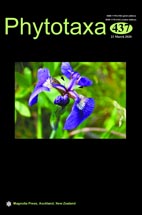Abstract
A new wood-inhabiting fungal species, Heteroradulum yunnanensis, is proposed based on a combination of morphological features and molecular evidence. The species is characterized by an annual growth habit, resupinate basidiomata with odontoid hymenial surface (50–100 µm long), more or less pronounced yellow stains in older basidiomata, a monomitic hyphal system with thin-walled, clamped generative hyphae and two to three-celled basidia and cylindrical, hyaline, thin-walled, smooth, IKI–, CB– basidiospores measuring as 17–24 ×5–8 µm. Sequences of ITS and LSU nrRNA gene regions of the studied samples were generated, and phylogenetic analyses were performed with maximum likelihood, maximum parsimony and bayesian inference methods. The phylogenetic analyses based on molecular data of ITS+nLSU sequences showed that Heteroradulum yunnanensis formed a monophyletic lineage with a strong support (100% BS, 100% BP, 1.00 BPP) and then grouped with H. adnatum.

